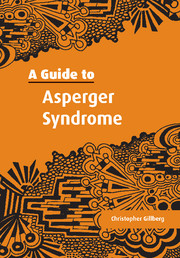Book contents
- Frontmatter
- Contents
- Preface
- 1 Introduction
- 2 Definitions
- 3 Prevalence
- 4 Symptoms in childhood
- 5 Symptoms in adolescence
- 6 Associated psychiatric and social problems
- 7 Other problems
- 8 Strengths
- 9 Background factors
- 10 Cognitive neuropsychology
- 11 Diagnosis and work-up
- 12 Outcome in the longer term: adults with Asperger syndrome
- 13 Attitudes, interventions and treatment
- 14 Who can help?
- 15 What about all those famous geniuses?
- 16 Case vignettes
- Appendices
- Further reading
- Index
3 - Prevalence
Published online by Cambridge University Press: 04 September 2009
- Frontmatter
- Contents
- Preface
- 1 Introduction
- 2 Definitions
- 3 Prevalence
- 4 Symptoms in childhood
- 5 Symptoms in adolescence
- 6 Associated psychiatric and social problems
- 7 Other problems
- 8 Strengths
- 9 Background factors
- 10 Cognitive neuropsychology
- 11 Diagnosis and work-up
- 12 Outcome in the longer term: adults with Asperger syndrome
- 13 Attitudes, interventions and treatment
- 14 Who can help?
- 15 What about all those famous geniuses?
- 16 Case vignettes
- Appendices
- Further reading
- Index
Summary
Population studies
The rate at which Asperger syndrome occurs in the general population has only been the subject of a few studies, the majority of which have been concerned with school-age children and performed in the Nordic countries. Therefore, it is difficult at the present stage to draw any generalised conclusions about the prevalence of the syndrome. It is impossible to determine whether or not Asperger syndrome is equally common across the globe, and, even, whether or not it occurs in all countries.
The first population study of the occurrence of Asperger syndrome was performed in Göteborg, Sweden in the early 1980s. About 5,000 children born in 1971 were screened and followed up in intensive neuropsychiatric studies. A minimum rate of 26 in 10,000 children was ascertained for ‘Asperger syndrome’ as described by Gillberg (1991). The rate of ‘disorder’ was similar if ICD-10 criteria were used and the requirement of normal development in the first three years of life disregarded. The focus of the study was on ADHD and DAMP (see chapter 2) and so the prevalence of Asperger syndrome must be regarded as a rough estimate.
More reliable estimates of disorder were obtained in two later studies specifically geared at evaluating prevalence rates of the disorder in school-age children. In a study performed in Göteborg in 1992, the rate of ‘typical’ Asperger syndrome (Gillberg and Gillberg criteria) in school-age children (7–16 years of age) was estimated at 36 in 10,000 children.
- Type
- Chapter
- Information
- A Guide to Asperger Syndrome , pp. 20 - 22Publisher: Cambridge University PressPrint publication year: 2002



